20 Best Dental Internship Programs for International Students in the USA 2026
Introduction
Embarking on a dental career as an international student in the United States can be both exciting and challenging. One of the most valuable experiences you can gain during your educational journey is participating in a dental internship. These programs offer a unique opportunity to bridge the gap between theoretical knowledge and practical application, while also providing insight into the American healthcare system and dental practices.
Importance of Internships for International Dental Students
For international students, dental internships in the USA are crucial for several reasons:
- Hands-on Experience: Internships provide practical, real-world experience that complements classroom learning. You’ll have the chance to observe and sometimes participate in various dental procedures, enhancing your clinical skills.
- Cultural Competence: Working in an American dental setting exposes you to diverse patient populations and different approaches to dental care, improving your cultural competence and adaptability.
- Networking: Internships offer invaluable opportunities to connect with professionals in the field, potentially opening doors for future career prospects.
- Understanding the US Healthcare System: You’ll gain first-hand knowledge of how dental practices operate within the American healthcare framework, including insurance systems and regulatory requirements.
- Improving Communication Skills: Interacting with patients and colleagues in an English-speaking environment will significantly enhance your language and communication skills.
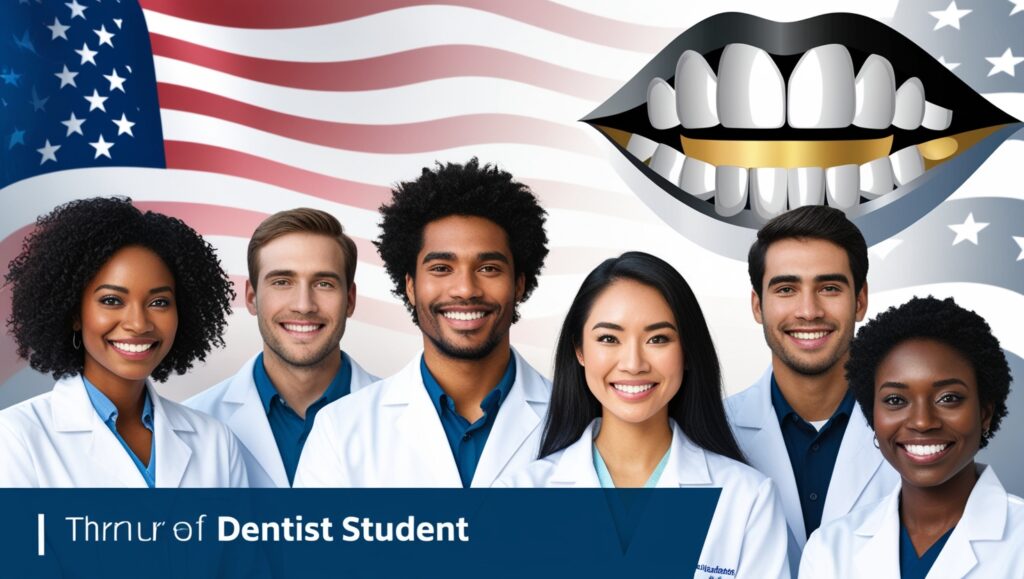
Overview of dental internship opportunities in the USA
The United States offers a wide range of dental internship opportunities for international students. These can be broadly categorized into:
- Observational Programs: These typically don’t involve hands-on patient care but allow you to shadow experienced dentists and observe various procedures.
- Research Internships: Some institutions offer opportunities to participate in dental research projects, which can be particularly valuable if you’re interested in academia or specialized fields of dentistry.
- Clinical Internships: These programs may allow more hands-on experience, depending on your qualifications and the specific program requirements.
- Advanced Standing Programs: While not strictly internships, these programs allow international dentists to earn a US dental degree in an accelerated timeframe, often including significant clinical components.
Benefits of Pursuing a Dental Internship as an International Student
Participating in a dental internship in the USA can provide numerous benefits:
- Enhanced Skillset: You’ll learn new techniques and approaches to dental care that may not be common in your home country.
- Competitive Advantage: International experience can set you apart in the job market, whether you plan to practice in the US or return to your home country.
- Personal Growth: Living and working in a new country fosters independence, adaptability, and cross-cultural understanding.
- Potential Pathway to US Practice: For those interested in practicing in the USA, internships can be a stepping stone towards understanding licensing requirements and building professional connections.
- Exposure to Cutting-edge Technology: Many US dental facilities are equipped with state-of-the-art technology, providing exposure to advanced tools and techniques.
Understanding Dental Internships in the USA
Before applying for dental internships in the United States, it’s crucial to understand the landscape and requirements for international students.
Types of Dental internships Available
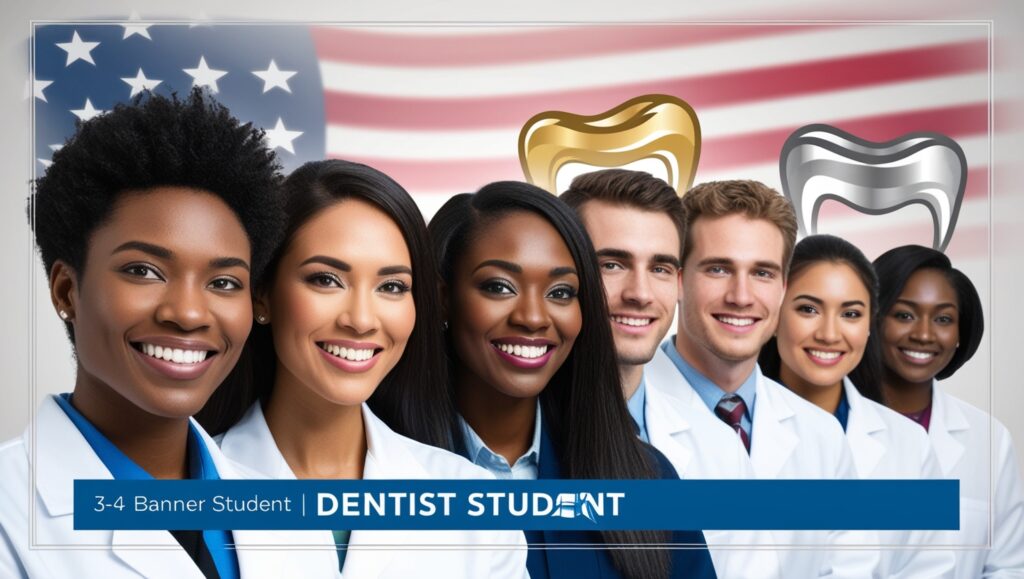
- University-affiliated Programs: Many dental schools offer internship or observership programs for international students. For example, the University of California, Los Angeles (UCLA) School of Dentistry offers an International Dentist Observation Program, which is a 3-month observational internship.
- Hospital-Based Internships: Some hospitals with dental departments offer internships. These often provide exposure to more complex cases and multidisciplinary care.
- Private Practice Internships: While less common, some private dental practices may offer internship opportunities, providing insight into the business aspects of dentistry in the USA.
- Research Internships: Institutions like the National Institute of Dental and Craniofacial Research (NIDCR) occasionally offer research opportunities for international students.
Differences Between Internships and Residencies
It’s important to distinguish between internships and residencies:
| INTERNSHIPS | RESIDENCIES |
|---|---|
| Generally shorter in duration (weeks to months) | Longer programs (1-3 years) |
| Often observational or with limited hands-on experience | Involve direct patient care and more responsibility |
| May not require a US dental license | Typically require a US dental license or degree |
| Usually unpaid or with minimal stipend | Often offer a stipend or salary |
For example, while the UCLA International Dentist Observation Program is a 3-month internship, the Advanced Education in General Dentistry (AEGD) program at the same institution is a year-long residency requiring a DDS or DMD degree.
Visa requirements for international students
- J-1 Visa: This is the most common visa for short-term educational and cultural exchange programs. Many observership and research internships fall under this category.
- F-1 Visa: If the internship is part of a degree program you’re enrolled in at a US institution, you may be able to participate under your F-1 student visa through Curricular Practical Training (CPT) or Optional Practical Training (OPT).
- B-1 Visa: In some cases, very short-term observerships (usually less than 6 months) might be possible under a B-1 visitor visa, but this is less common and has significant limitations.
It’s crucial to note that visa requirements can be complex and may change. For instance, a dental student from India interested in the 3-month UCLA observership would typically apply for a J-1 visa, which would require sponsorship from the university, proof of funding, and a DS-2019 form, among other documents.
Always consult with the internship program coordinator and your nearest U.S. embassy or consulate for the most up-to-date visa information. Additionally, be aware that visa processing times can vary significantly, so it’s advisable to start the application process well in advance of your intended internship start date.
20 Best Internship Programs For International Students Offering Dental Course in the USA
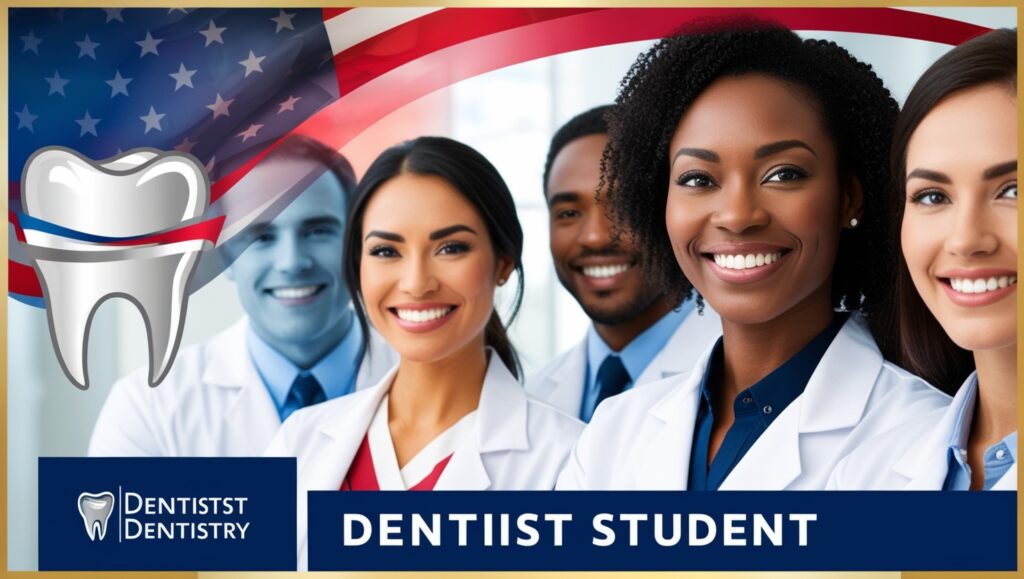
1. University of California, Los Angeles (UCLA) School of Dentistry
- Program: International Dentist Observation Program
- Requirements: Dental degree from a non-US institution, TOEFL score of 87 or higher
- Duration: 3 months
- Application Timeline: Applications accepted year-round
- Compensation: Unpaid
- Additional Info: Observational program, no hands-on clinical experience
2. New York University College of Dentistry
- Program: International Program in Advanced Standing
- Requirements: Dental degree from a non-US institution, TOEFL score of 100 or higher
- Duration: 2 years (leading to DDS degree)
- Application Timeline: Deadline in September for the following year
- Compensation: N/A (Tuition-based program)
- Additional Info: Includes clinical rotations and research opportunities
3. University of Pennsylvania School of Dental Medicine
- Program: Internationally Educated DMD Program
- Requirements: Dental degree from a non-US institution, TOEFL score of 100 or higher
- Duration: 2 years
- Application Timeline: Deadline in June for the following year
- Compensation: N/A (Tuition-based program)
- Additional Info: Leads to DMD degree, includes clinical practice
4. Boston University Henry M. Goldman School of Dental Medicine
- Program: Advanced Standing Program
- Requirements: Dental degree from a non-US institution, TOEFL score of 90 or higher
- Duration: 2 years
- Application Timeline: Deadline in October for the following year
- Compensation: N/A (Tuition-based program)
- Additional Info: Leads to DMD degree, includes hands-on clinical experience
5. University of Michigan School of Dentistry
- Program: Internationally Trained Dentist Program (ITDP)
- Requirements: Dental degree from a non-US institution, TOEFL score of 90 or higher
- Duration: 3 years
- Application Timeline: Deadline in October for the following year
- Compensation: N/A (Tuition-based program)
- Additional Info: Leads to DDS degree, includes research opportunities
6. Harvard School of Dental Medicine
- Program: Advanced Graduate Education Programs
- Requirements: Dental degree, TOEFL score of 100 or higher
- Duration: Varies by program (1-3 years)
- Application Timeline: Deadlines vary by program
- Compensation: Stipend available for some programs
- Additional Info: Various specialty programs available
7. University of Southern California Herman Ostrow School of Dentistry
- Program: Advanced Standing Program for International Dentists
- Requirements: Dental degree from a non-US institution, TOEFL score of 100 or higher
- Duration: 2 years
- Application Timeline: Deadline in October for the following year
- Compensation: N/A (Tuition-based program)
- Additional Info: Leads to DDS degree, includes clinical rotations
8. Tufts University School of Dental Medicine
- Program: International Dental Program
- Requirements: Dental degree from a non-US institution, TOEFL score of 90 or higher
- Duration: 2 years
- Application Timeline: Deadline in June for the following year
- Compensation: N/A (Tuition-based program)
- Additional Info: Leads to DMD degree, includes hands-on clinical experience
9. University of Florida College of Dentistry
- Program: International Dental Student Program
- Requirements: Dental degree from a non-US institution, TOEFL score of 80 or higher
- Duration: 2.5 years
- Application Timeline: Deadline in July for the following year
- Compensation: N/A (Tuition-based program)
- Additional Info: Leads to DMD degree, includes clinical practice
10. University of Illinois at Chicago College of Dentistry
- Program: International Dentist Program
- Requirements: Dental degree from a non-US institution, TOEFL score of 80 or higher
- Duration: 2 years
- Application Timeline: Deadline in September for the following year
- Compensation: N/A (Tuition-based program)
- Additional Info: Leads to DDS degree, includes clinical rotations
11. Loma Linda University School of Dentistry
- Program: International Dentist Program
- Requirements: Dental degree from a non-US institution, TOEFL score of 80 or higher
- Duration: 2 years
- Application Timeline: Deadline in August for the following year
- Compensation: N/A (Tuition-based program)
- Additional Info: Leads to DDS degree, includes mission-oriented service opportunities
12. University of the Pacific Arthur A. Dugoni School of Dentistry
- Program: International Dental Studies Program
- Requirements: Dental degree from a non-US institution, TOEFL score of 92 or higher
- Duration: 2 years
- Application Timeline: Deadline in October for the following year
- Compensation: N/A (Tuition-based program)
- Additional Info: Leads to DDS degree, accelerated program
13. Rutgers School of Dental Medicine
- Program: Internationally Trained DMD Program
- Requirements: Dental degree from a non-US institution, TOEFL score of 79 or higher
- Duration: 2.5 years
- Application Timeline: Deadline in June for the following year
- Compensation: N/A (Tuition-based program)
- Additional Info: Leads to DMD degree, includes community service component
14. University of Buffalo School of Dental Medicine
- Program: International Dentist Program
- Requirements: Dental degree from a non-US institution, TOEFL score of 90 or higher
- Duration: 2 years
- Application Timeline: Deadline in October for the following year
- Compensation: N/A (Tuition-based program)
- Additional Info: Leads to DDS degree, includes research opportunities
s
15. University of Texas Health Science Center at Houston School of Dentistry
- Program: International Dental Program
- Requirements: Dental degree from a non-US institution, TOEFL score of 100 or higher
- Duration: 2 years
- Application Timeline: Deadline in August for the following year
- Compensation: N/A (Tuition-based program)
- Additional Info: Leads to DDS degree, includes clinical practice
16. Nova Southeastern University College of Dental Medicine
- Program: International Dental Graduate Program
- Requirements: Dental degree from a non-US institution, TOEFL score of 80 or higher
- Duration: 3 years
- Application Timeline: Deadline in November for the following year
- Compensation: N/A (Tuition-based program)
- Additional Info: Leads to DMD degree, includes community outreach programs
17. Case Western Reserve University School of Dental Medicine
- Program: International Dentist Program
- Requirements: Dental degree from a non-US institution, TOEFL score of 90 or higher
- Duration: 2 years
- Application Timeline: Deadline in September for the following year
- Compensation: N/A (Tuition-based program)
- Additional Info: Leads to DMD degree, includes interdisciplinary collaboration opportunities
18. University of Washington School of Dentistry
- Program: International DDS Program
- Requirements: Dental degree from a non-US institution, TOEFL score of 92 or higher
- Duration: 2 years
- Application Timeline: Deadline in July for the following year
- Compensation: N/A (Tuition-based program)
- Additional Info: Leads to DDS degree, includes research component
19. University of Maryland School of Dentistry
- Program: Advanced Standing Program for International Dentists
- Requirements: Dental degree from a non-US institution, TOEFL score of 100 or higher
- Duration: 2 years
- Application Timeline: Deadline in August for the following year
- Compensation: N/A (Tuition-based program)
- Additional Info: Leads to DDS degree, includes clinical rotations
20. Columbia University College of Dental Medicine
- Program: Advanced Standing Program for International Dentists
- Requirements: Dental degree from a non-US institution, TOEFL score of 100 or higher
- Duration: 2 years
- Application Timeline: Deadline in October for the following year
- Compensation: N/A (Tuition-based program)
- Additional Info: Leads to DDS degree, includes research opportunities
Application Process for Internship As International Student
Securing a dental internship in the USA as an international student requires careful preparation and attention to detail. Understanding the application process and requirements is crucial for success.
Required Documents
Transcripts and Diplomas
Most internship programs require official transcripts from your dental school. These should be in English or accompanied by certified translations. For instance, the University of Pennsylvania School of Dental Medicine’s Internationally Educated DMD Program requires applicants to submit original transcripts along with course-by-course evaluations from a recognized credential evaluation service such as World Education Services (WES).
Letters of Recommendation
Typically, you’ll need to submit 2-3 letters of recommendation from dental professionals who can attest to your skills and character. Harvard School of Dental Medicine, for example, requires three letters of recommendation for their Advanced Graduate Education Programs, preferably from dental school faculty members who are familiar with the applicant’s academic and clinical abilities.
Personal Statement
Your personal statement is a crucial component of your application. It should articulate your motivations for pursuing an internship in the USA, your career goals, and how the specific program aligns with these objectives. The University of Michigan School of Dentistry’s Internationally Trained Dentist Program (ITDP) requires a personal statement that also includes information about the applicant’s dental experience and reasons for choosing their program specifically.
Proof of English Proficiency
Most programs require proof of English proficiency, typically in the form of TOEFL (Test of English as a Foreign Language) or IELTS (International English Language Testing System) scores. For example, New York University College of Dentistry’s International Program in Advanced Standing requires a minimum TOEFL score of 100 or an IELTS score of 7.0.
Tips for Creating a Strong Application
Tailor Your Application
Customize your personal statement and application materials for each program. Research the institution’s values, mission, and unique offerings, and reflect on how these align with your goals and experiences.
Highlight Relevant Experience
Emphasize any unique clinical experiences, research projects, or community service activities that set you apart. For instance, if you’ve participated in dental outreach programs in underserved communities, this could be particularly relevant for programs like Loma Linda University School of Dentistry, which emphasizes mission-oriented service.
Demonstrate Cultural Awareness
Show your understanding of and interest in American dental practices. This could include mentioning any U.S. dental conferences you’ve attended or American dental journals you follow.
Common Mistakes to Avoid
Missing Deadlines
Application deadlines vary widely between programs. For example, the University of Florida College of Dentistry’s International Dental Student Program has a deadline in July for the following year, while Tufts University School of Dental Medicine’s International Dental Program deadline is in June. Create a calendar of deadlines to ensure you don’t miss any crucial dates.
Neglecting to Research Visa Requirements
Each program may have different visa sponsorship policies. Failing to understand these can lead to issues even if you’re accepted into a program. Always clarify visa requirements with the program coordinator during the application process.
Overlooking Program-Specific Requirements
Some programs may have unique requirements. For instance, the University of California, Los Angeles (UCLA) School of Dentistry’s International Dentist Observation Program requires applicants to secure their own housing and transportation, which should be addressed in the application process.
Preparing for Your Dental Internship
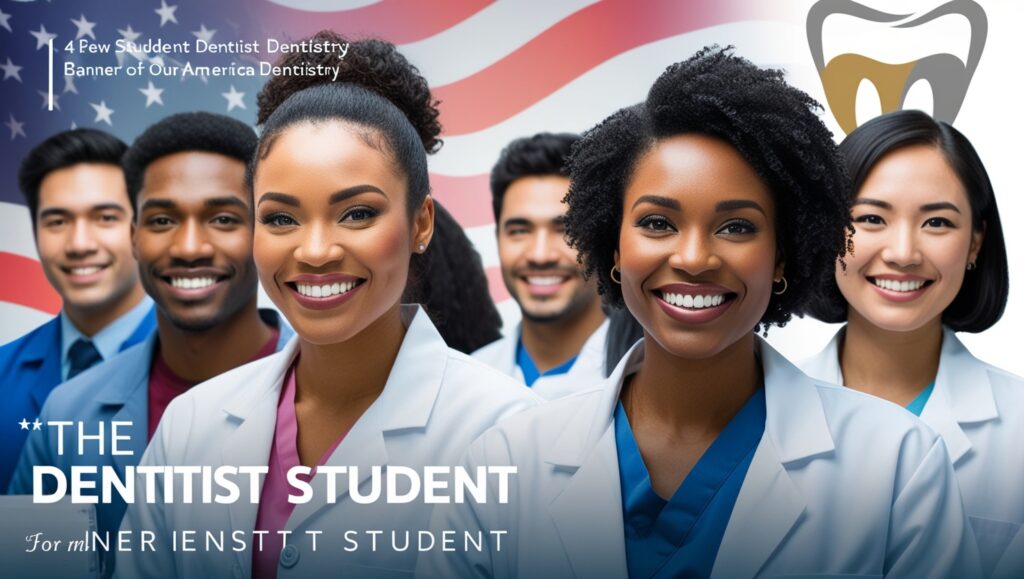
Once you’ve been accepted into a dental internship program, thorough preparation is key to making the most of your experience.
Obtaining the Necessary Visa
J-1 Visa Process
For most short-term internships, you’ll likely need a J-1 visa. The process typically involves:
- Receiving a DS-2019 form from your program sponsor
- Paying the SEVIS I-901 fee
- Completing the DS-160 online visa application
- Scheduling and attending a visa interview at a U.S. embassy or consulate
Understanding J1 visa dental internship USA requirements and alternatives is essential for international dental students planning US experiences. The J-1 Exchange Visitor visa remains the most common option for longer-term dental programs, requiring sponsorship from ECFMG-approved institutions and comprehensive documentation including DS-2019 forms, financial support evidence, and English proficiency scores. International students requiring visa sponsorship must demonstrate sufficient funding to cover program costs and living expenses, typically ranging from $20,000-$50,000 depending on location and program duration.
B-1 visitor visas accommodate shorter observational experiences but strictly prohibit hands-on patient care activities. F-1 visa holders can participate in dental programs through Curricular Practical Training (CPT) if the experience directly relates to their academic curriculum. Visa processing timelines have extended in 2025, with some embassies reporting 8-12 week wait times for interviews, making early application crucial. Programs exceeding six months require additional documentation including Worker’s Compensation Insurance Policy proof.
Housing and Accommodation Tips
Research Housing Options
Start researching housing options as soon as you’re accepted into a program. Some universities, like the University of Pennsylvania, offer on-campus housing for international students in their dental programs. Others, like New York University, provide resources to help students find off-campus housing.
Consider Short-Term Rentals
For shorter internships, consider options like Airbnb or extended-stay hotels. These can offer more flexibility than traditional leases.
Proximity to Your Internship Site
Choose accommodation that’s conveniently located. For instance, if you’re interning at the Boston University Henry M. Goldman School of Dental Medicine, you might look for housing in the Fenway-Kenmore or Allston neighborhoods, which are close to the campus.
Cultural Preparation for Living in the USA
Understanding the Healthcare System
Familiarize yourself with the basics of the U.S. healthcare system, including dental insurance concepts. The American Dental Education Association (ADEA) offers resources that can be helpful in understanding the landscape of dental education and practice in the USA.
American Dental Practices
Research common dental practices in the USA. For example, the emphasis on preventive care and the use of dental hygienists might differ from practices in your home country.
Cultural Norms and Etiquette
Learn about American cultural norms, especially those relevant to healthcare settings. For instance, the concept of patient privacy is heavily emphasized in the U.S., as regulated by HIPAA (Health Insurance Portability and Accountability Act).
Language and Communication
Even if you’ve met the English proficiency requirements, consider additional language preparation, particularly for dental and medical terminology. Resources like the ADA’s Dental English online course can be valuable for international dental professionals.
By thoroughly preparing for these aspects of your internship, you’ll be better positioned to fully engage with and benefit from your experience in a U.S. dental setting. Remember, each program and location will have its unique characteristics, so always refer to the specific guidelines provided by your internship program.
Making the Most of Your Dental Internship
Your dental internship in the USA is a unique opportunity for professional growth and cultural experience. Maximizing this opportunity requires proactive engagement and strategic planning.
Networking Opportunities
Professional Associations
Join relevant professional associations. For instance, the American Student Dental Association (ASDA) welcomes international students and provides networking opportunities, educational resources, and insights into the U.S. dental landscape.
Conferences and Seminars
Attend dental conferences and seminars when possible. The American Dental Association (ADA) annual meeting, for example, offers a chance to learn about the latest developments in dentistry and connect with professionals from across the country.
Institutional Events
Participate in events organized by your host institution. For example, the University of California, San Francisco (UCSF) School of Dentistry regularly hosts guest lectures and research symposiums, providing excellent networking opportunities for interns and students.
Building a Professional Portfolio
Documentation of Procedures
Keep a detailed log of the procedures you observe or assist with during your internship. This can be particularly valuable if you’re in a program like the University of Pennsylvania’s Internationally Educated DMD Program, which includes clinical rotations.
Research Participation
If your internship includes a research component, like those offered at Harvard School of Dental Medicine, document your contributions meticulously. This can be a significant addition to your professional portfolio.
Case Studies
Develop case studies based on your observations, ensuring patient confidentiality is maintained. These can showcase your analytical skills and understanding of dental practices to future employers or educational institutions.
Balancing Work and Cultural Experiences
Time Management
Create a schedule that allows you to fulfill your internship responsibilities while also exploring your new environment. For instance, if you’re interning at New York University College of Dentistry, you might plan to visit iconic New York City landmarks on weekends.
Cultural Immersion
Engage in local cultural activities. Many cities with major dental schools, like Boston, Chicago, or Los Angeles, offer rich cultural experiences. Participating in these can enhance your understanding of American society and improve your communication skills.
Peer Interaction
Build relationships with fellow interns and local students. Programs like the University of Michigan’s Internationally Trained Dentist Program (ITDP) often have a diverse cohort, providing opportunities for cross-cultural exchange.
After the Internship
Your dental internship in the USA is not just a temporary experience, but a stepping stone for your future career. Here’s how to leverage your internship experience effectively.
Career Paths for International Dental Students in the USA
Further Education
Consider pursuing advanced degrees or specializations. For example, after completing an internship, you might apply for programs like the Advanced Standing Program for International Dentists at Columbia University College of Dental Medicine, which leads to a DDS degree.
Licensing Process
If you’re interested in practicing in the USA, research the licensing requirements in your preferred state. Requirements can vary, but generally include graduating from an accredited dental school, passing the National Board Dental Examinations, and completing a regional or state clinical examination.
Research Opportunities
For those interested in academia or research, consider applying for positions at dental research institutions. The National Institute of Dental and Craniofacial Research (NIDCR), for instance, offers various research opportunities that could be a next step after your internship.
Continuing Education Opportunities
Specialty Programs
Explore specialty programs in areas like orthodontics, periodontics, or oral surgery. Schools like the University of California, Los Angeles (UCLA) School of Dentistry offer advanced specialty programs that welcome international applicants.
Online Courses and Certifications
Take advantage of online continuing education courses. The ADA’s Center for Professional Success offers a wide range of online CE courses that can help you stay updated on the latest dental practices and technologies.
Workshops and Hands-on Training
Look for hands-on workshops in specific areas of interest. For example, the Dawson Academy offers courses in occlusion and restorative dentistry that are open to international dentists.
Returning to Your Home Country: Applying Your New Skills and Knowledge
Knowledge Transfer
Consider how you can apply the techniques and approaches you’ve learned to your practice back home. For instance, if you’ve been exposed to advanced digital dentistry techniques during your internship at a place like the University of the Pacific Arthur A. Dugoni School of Dentistry, think about how you might introduce these in your home country.
Establishing International Connections
Maintain the professional network you’ve built during your internship. These connections can be valuable for future collaborations, research projects, or even patient referrals.
Continuing Professional Development
Stay connected with U.S. dental developments through online resources, webinars, and international dental journals. This ongoing engagement can help you bring cutting-edge practices to your home country.
Mentorship and Teaching
Consider how you can share your U.S. experience with dental students or colleagues in your home country. You might give guest lectures or offer mentorship to students interested in international dental experiences.
By thoughtfully applying the knowledge and experiences gained during your U.S. dental internship, you can significantly enhance your career prospects and contribute to the advancement of dental practices in your home country. Remember, the goal is not just to complete the internship, but to use it as a launching pad for continued growth and success in your dental career.
Latest Updates in Dental Education for International Students (2026)
The landscape of dental internship programs for international students in USA has undergone significant changes in 2025, particularly with the implementation of the Integrated National Board Dental Examination (INBDE). The INBDE has replaced the traditional NBDE Part I and II exams, creating a more streamlined assessment process for international dental students. This change affects both admission requirements and preparation strategies for advanced standing dental programs USA. Additionally, many dental schools have updated their TOEFL requirements dental school international students, with minimum scores now ranging from 80-100 iBT depending on the institution. With approximately 500-600 seats available for 3,000 applicants annually, competition for dental programs remains intense.
INBDE Requirements for International Dentists 2026
The INBDE requirements for international dentists have revolutionized the pathway for foreign-trained dental professionals seeking to practice in the United States. The Integrated National Board Dental Examination (INBDE) replaced the separate NBDE Part I and II exams, creating a comprehensive assessment covering all essential dental knowledge areas. International dentists are recommended to take the INBDE exam approximately 9 months after graduation to allow adequate preparation time. The exam format integrates basic sciences with clinical applications, requiring more comprehensive preparation than previous examinations. Most dental schools now require INBDE scores for international applicants, with results submitted through the CAAPID application system. This change has implications for dental school prerequisites international students USA must meet, as the integrated format demands stronger foundational knowledge across all dental disciplines.
Advanced Standing Programs vs Traditional Internships
Advanced standing dental programs USA represent a distinct pathway from traditional internships, designed specifically for internationally trained dentists seeking US dental degrees. These comprehensive programs, typically lasting 2-3 years, culminate in DDS or DMD degrees and include extensive clinical dental rotations international students participate in alongside American students. Programs like the University of Michigan’s Internationally Trained Dentist Program (ITDP) require a full-time, 28-month commitment, providing thorough integration into American dental education and practice. Unlike shorter internships or observerships, advanced standing programs include didactic coursework, laboratory training, and supervised clinical practice leading to licensure eligibility. These programs typically require INBDE requirements for international dentists completion, TOEFL requirements dental school international students fulfillment, and comprehensive academic evaluations. The investment is substantial, both financially and time-wise, but graduates earn the same credentials as US dental school graduates.
Professional Dental Organizations for International Students
- American Dental Education Association (ADEA)
- International Association for Dental Research (IADR)
- Hispanic Dental Association (HDA)
Scholarship Opportunities
- ADEA International Dental Student Financial Aid Resources
- Colgate Palmolive Dental Student Research Scholarship
FAQS
What’s the difference between dental observership and internship programs for international students in the USA?
The main difference lies in the level of patient interaction and program structure. Dental observership vs internship USA programs differ significantly: observerships are purely observational experiences lasting 2-8 weeks where international students shadow dentists and observe procedures without any hands-on patient contact. These are suitable for B-1 visa holders and those exploring American dental practices. Internships, however, may include limited hands-on patient interaction under supervision, typically last 3-12 months, and often require J-1 visa sponsorship. Internships provide deeper clinical integration, research opportunities, and stronger preparation for residency applications, while observerships offer valuable exposure with fewer visa restrictions.
What are the INBDE requirements for international dentists in 2025?
he INBDE requirements for international dentists have replaced the traditional NBDE Part I and II exams as of 2025. International dentists must pass the Integrated National Board Dental Examination, which comprehensively covers basic sciences integrated with clinical applications. Most advanced standing dental programs USA now require INBDE scores for admission, submitted through the CAAPID application system. The exam should typically be taken 6-9 months after graduation to allow adequate preparation time. Additionally, international applicants must meet TOEFL requirements dental school international students (usually 80-100 iBT minimum) and provide transcript evaluations from recognized credential evaluation services.
What type of visa do I need for dental internship programs in the USA?
For J1 visa dental internship USA programs lasting more than 90 days or involving any hands-on clinical activities, you’ll need J-1 Exchange Visitor visa sponsorship from an ECFMG-approved institution. This requires a DS-2019 form, proof of financial support (typically $20,000-$50,000), and English proficiency scores. For shorter observational programs (under 90 days), B-1 visitor visas may be appropriate but strictly prohibit patient contact. F-1 visa holders already in the US can participate through Curricular Practical Training (CPT) if the dental experience directly relates to their academic program. Visa processing times in 2025 average 8-12 weeks, so early application is crucial.
Are dental internships in the USA paid or unpaid for international students?
Most dental internship programs for international students in USA are unpaid, particularly observership programs and shorter clinical experiences. However, some longer-term programs and research-intensive internships may offer modest stipends ranging from $1,000-$3,000 per month. Advanced standing dental programs USA typically require tuition payment rather than providing compensation, as they lead to DDS/DMD degrees. International students should budget for living expenses, program fees, visa costs, and health insurance, with total costs often ranging from $20,000-$50,000 depending on location and program duration. Some programs offer partial scholarships or assistantship opportunities for exceptional candidates.
What are the prerequisites for international students applying to dental programs in the USA?
Dental school prerequisites international students USA must meet include: a dental degree from an accredited international institution, TOEFL requirements dental school international students (typically 80-100 iBT minimum), official transcripts with course-by-course evaluations, and 2-3 letters of recommendation from dental professionals. Many programs now require INBDE requirements for international dentists completion or scores from NBDE Part I/II. Additional requirements often include a personal statement, CV highlighting clinical and research experience, proof of financial support, and health insurance documentation. Some programs require specific GPA minimums (usually 3.0-3.5) and may prefer candidates with US clinical exposure or research experience.
Can dental observership programs lead to hands-on clinical experience or residency opportunities?
While dental observership vs internship USA programs are strictly observational, they often serve as stepping stones to more advanced opportunities. Successful observership completion demonstrates commitment and familiarity with American dental practices, potentially leading to invitations for longer internships or externships with hands-on dental experience international students can access. Many students use observerships to build relationships with potential mentors and program directors, which can be valuable for future residency applications. Dental residency international students requirements typically mandate US dental degrees and clinical experience, making observerships part of a longer pathway that may include advanced standing programs. While observerships don’t directly provide clinical credentials, they offer essential networking opportunities and insights that strengthen subsequent applications for degree programs and residencies.
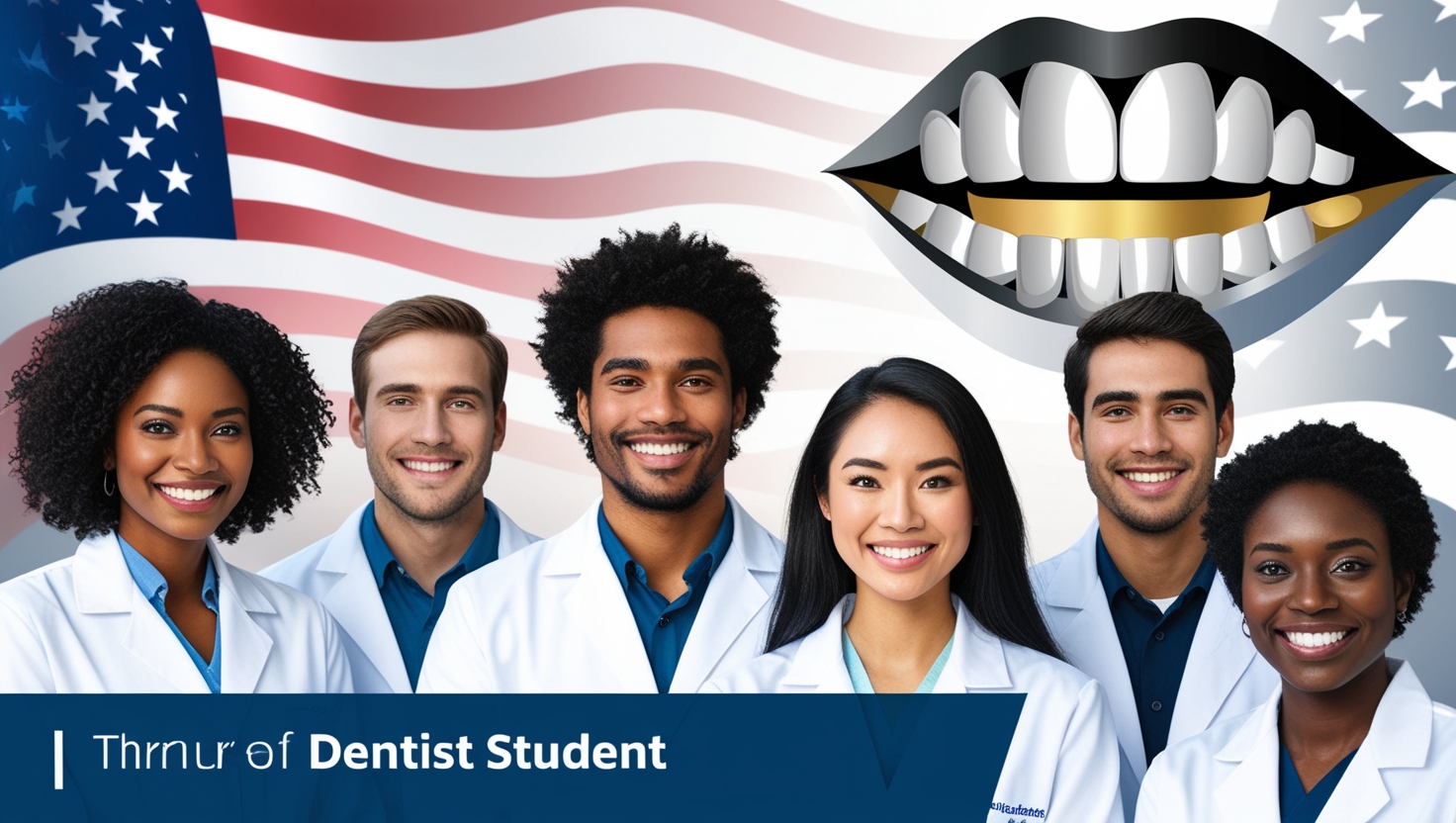

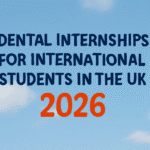

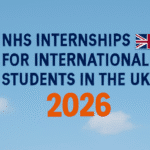
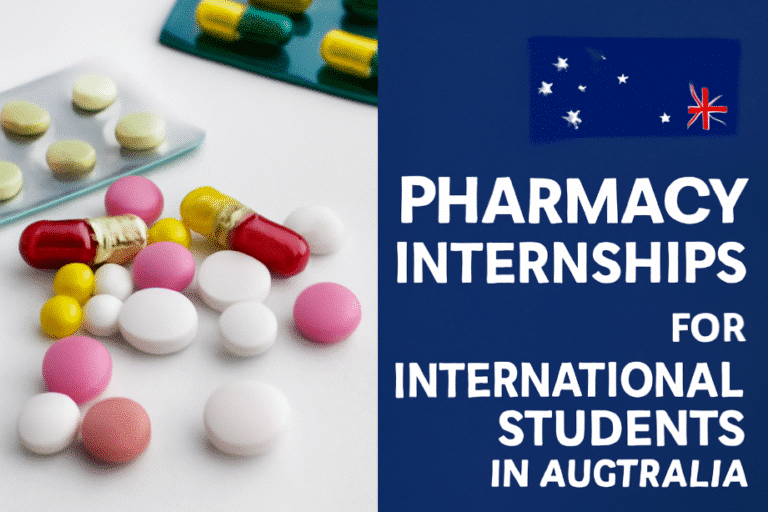
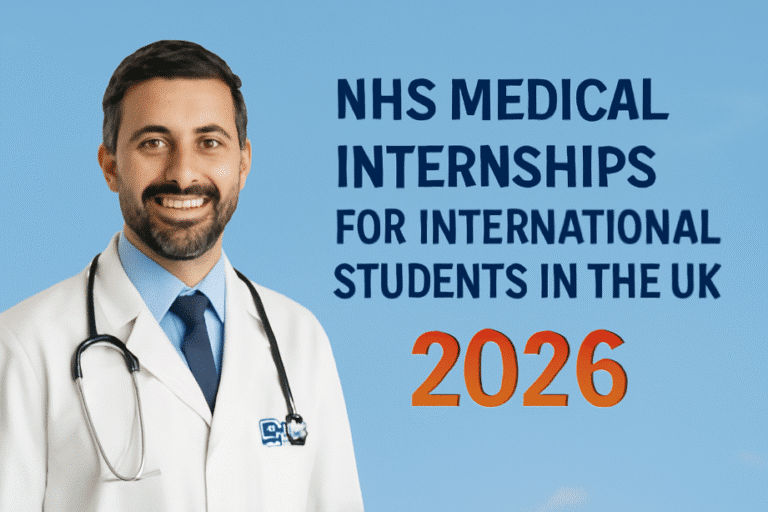
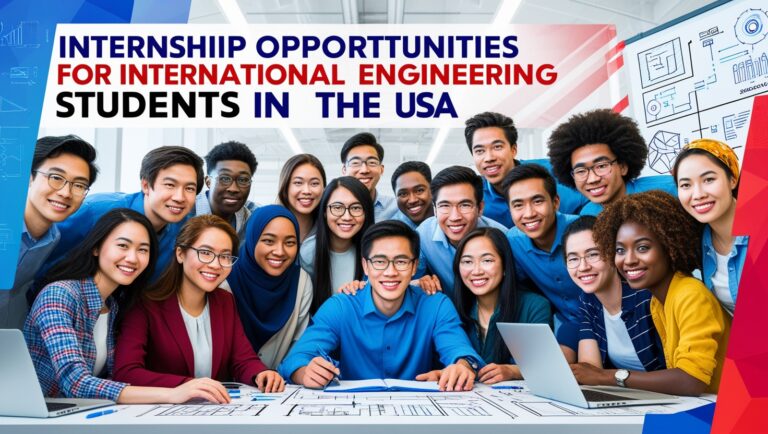
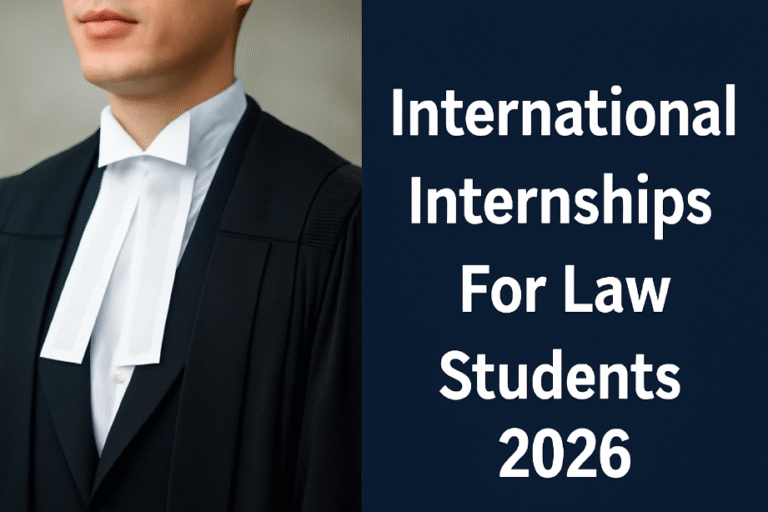
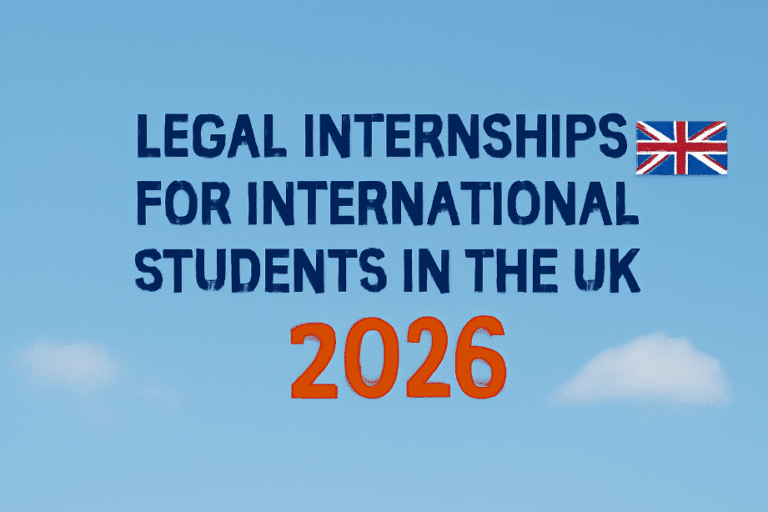
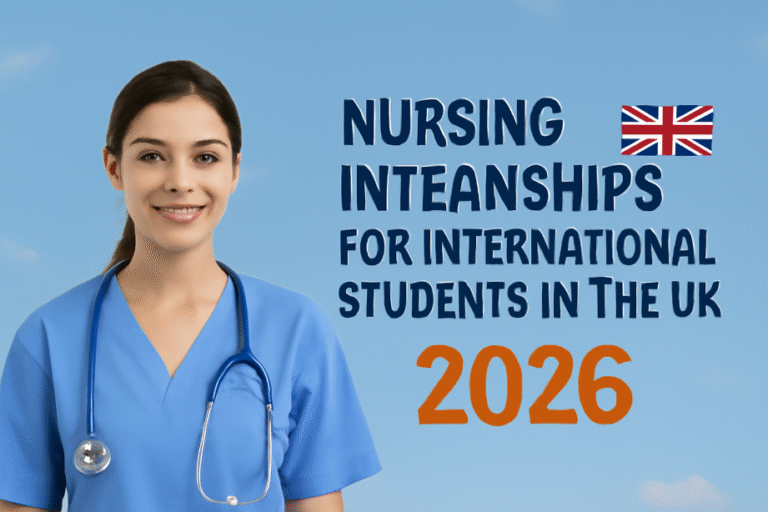
One Comment